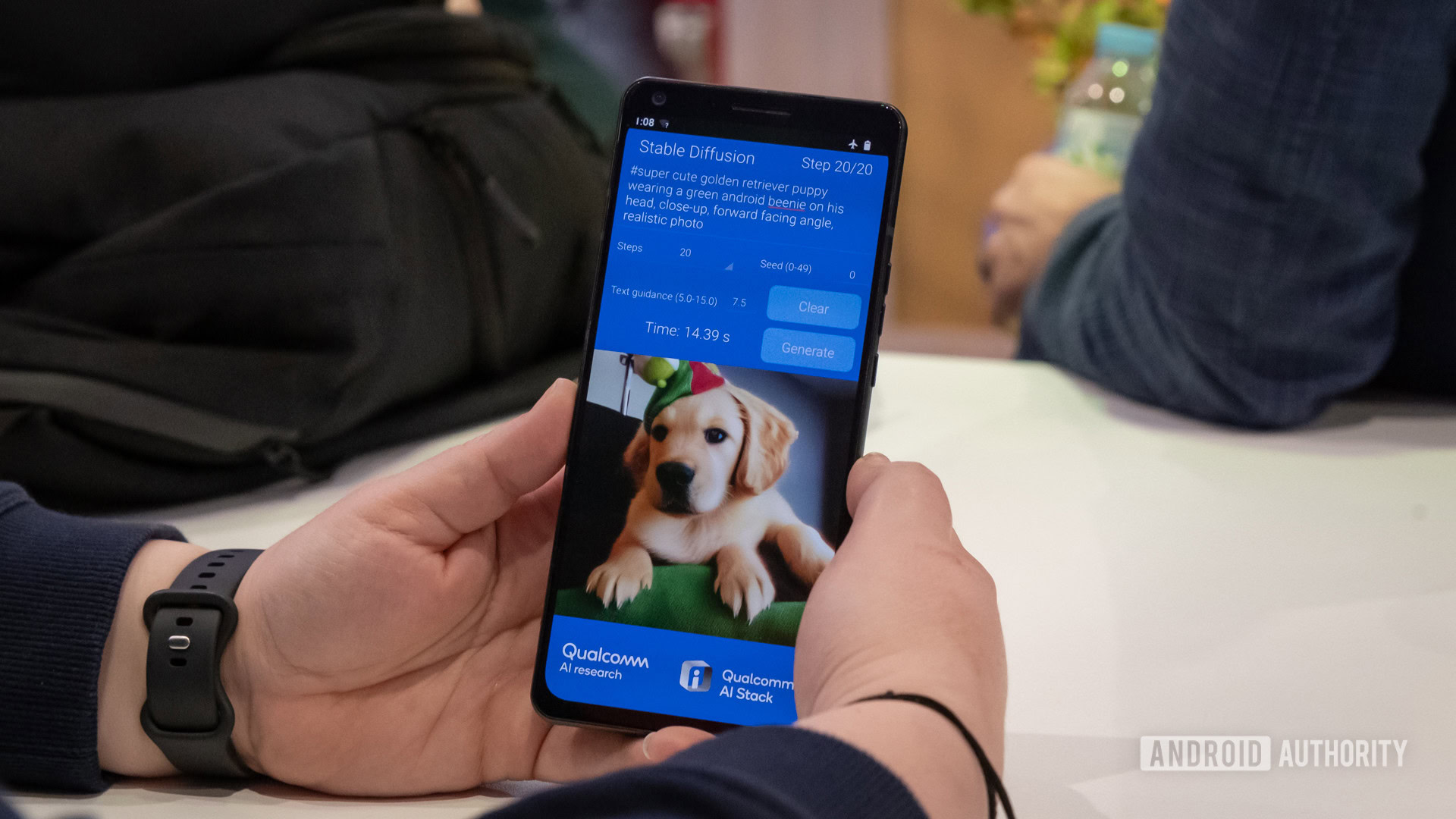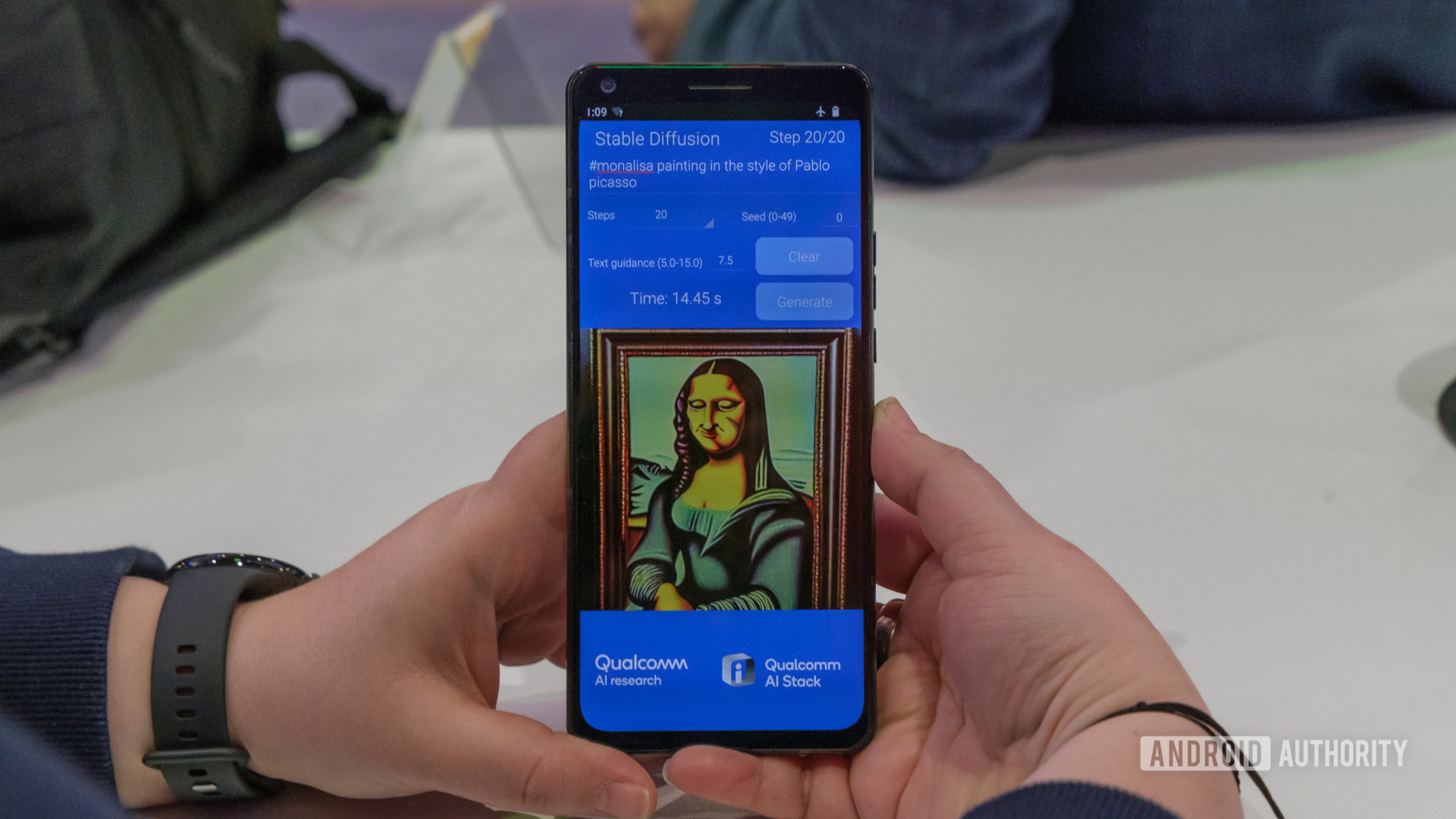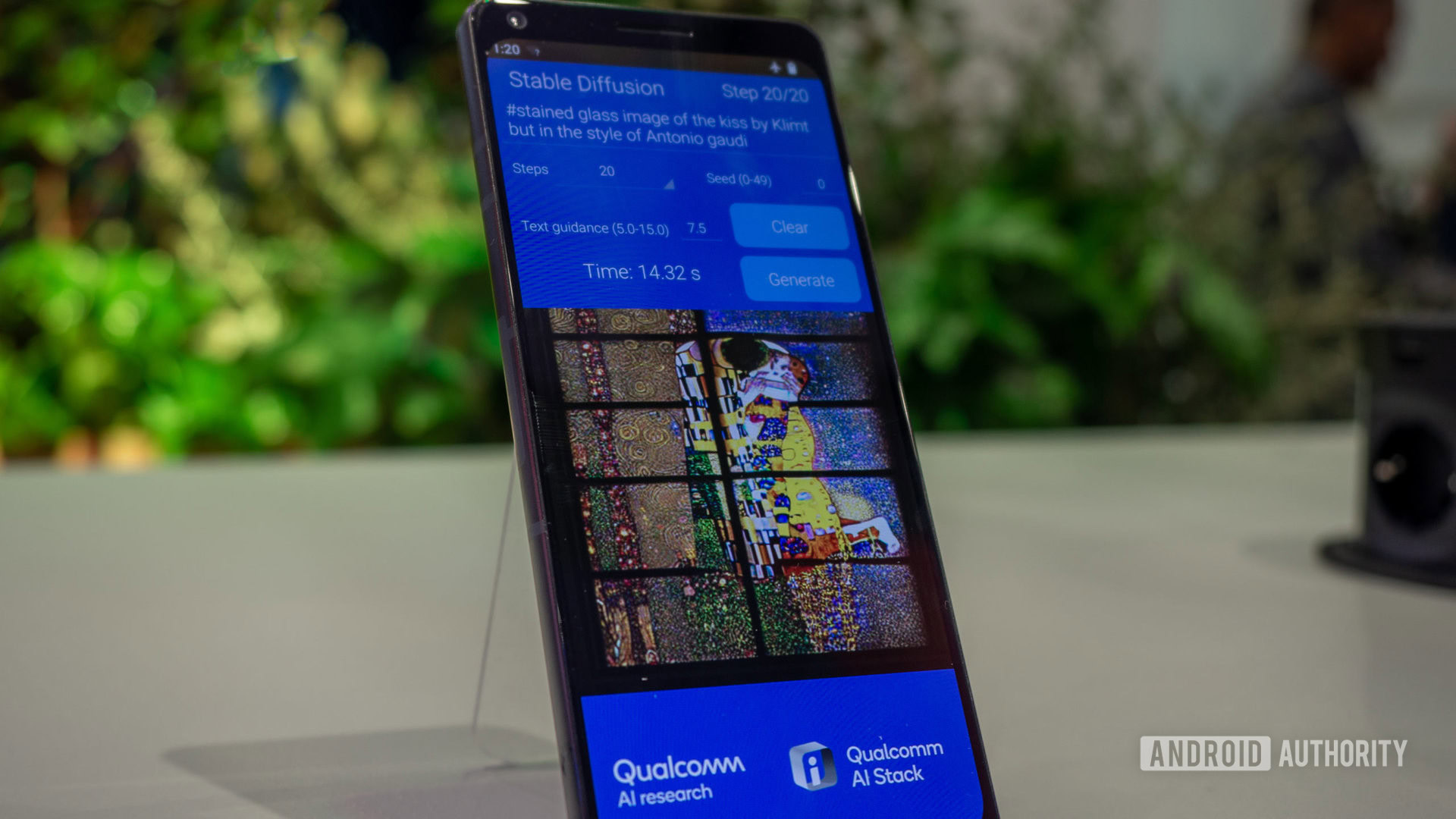Affiliate links on Android Authority may earn us a commission. Learn more.
I used an offline AI to generate an image of a puppy retriever on a phone
Published onFebruary 28, 2023
At MWC 2023, Qualcomm was showing off its new AI chops, particularly the ability to run a local instance of Stable Diffusion 1.5 to generate an image on a phone offline. We went hands-on with it to see how fast and how well it works.
The model was running on an Android phone with a Snapdragon 8 Gen 2 chip, in airplane mode. You just input a prompt for a photo using natural language, and the offline AI image generator starts building the image from a blurry outline to a finished product. The entire process takes less than 15 seconds to generate a 512 x 512 image.
Qualcomm's Stable Diffusion model runs offline on an Android phone with the Snapdragon 8 Gen 2 chip.
My first prompt had to be a golden retriever puppy wearing a green Android beenie, and I have to say it got pretty close. Just stop for a second to appreciate the fact that this particular puppy doesn’t exist — an AI just created it based on what it knows about golden retriever puppies.

While 15 seconds may seem like too much time (and 512 x 512 is too small of an image), it’s all quite impressive considering that everything is running locally. Qualcomm says that the 8 Gen 2’s Hexagon DSP is crucial in getting this AI model to work this fast offline; relying on the CPU would take a considerably longer time.

Given the immediate reward, I decided to try other prompts just for the fun of it. The Mona Lisa in the style of Pablo Picasso? Check. A man holding a smartphone twice as tall as he is? Why not. Other random artistic inspirations? Of course.
Every image was generated locally by the AI model in less than 15 seconds.
As with DALL-E, Midjourney, and alternative image generators, the more precise your prompt, the better the end result. I tried to get Gaudi-style “colored glass” of Gustave Klimt’s famous The Kiss painting, but got a vase-like shape instead. Switching to “stained glass” created the window glass effect I was looking for.

For now, Qualcomm’s offline AI image generator model is a proof of concept. I couldn’t save the images or share them anywhere to give them a more thorough look. We have no idea if this will come to our phones, how, or when. Also, the same prompt generates the exact same image, so there’s no point in running it again to see what else it might come up with. You have to, at least, change a word to get different results.
But the technology is getting there. Right now, text-to-image generation based on AI or ML requires an internet connection, fast and powerful remote servers, and you have to wait for your turn in the queue to get your prompt processed. The more popular a service is, the longer the wait before you get your images. Soon, you may be able to do that on your phone whenever you wanted, in a few seconds, and with better privacy, and that is incredibly cool.